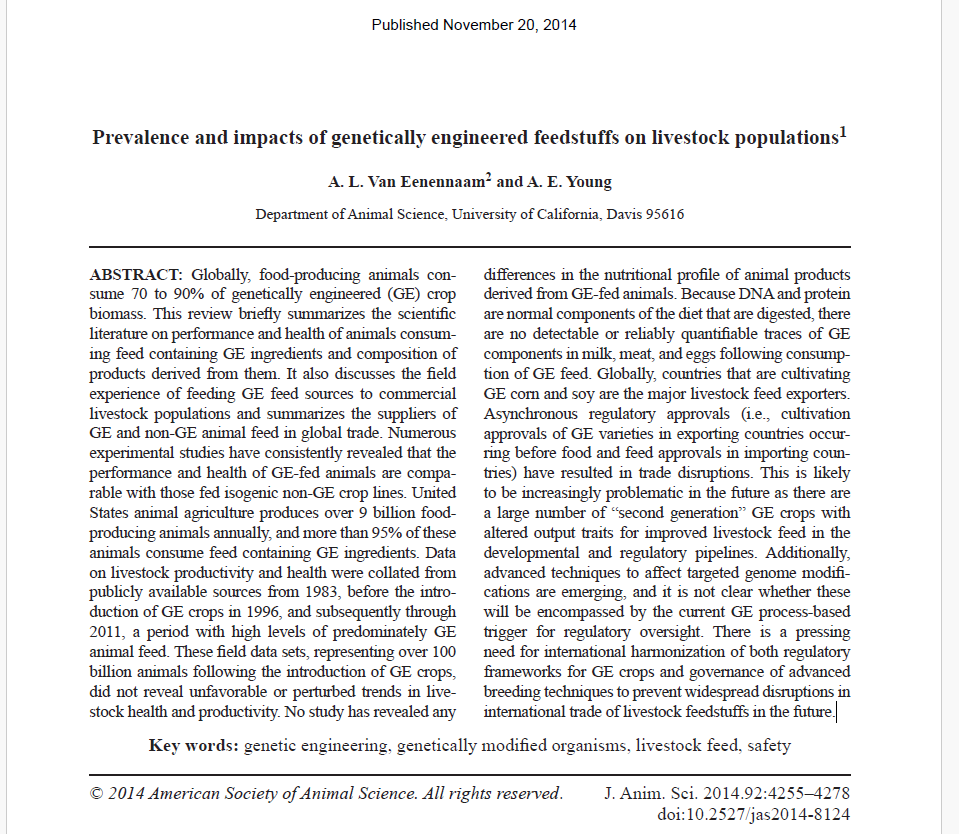Prevalence and impacts of genetically engineered feedstuffs on livestock populations

Language: English
Publication Year: 2014
Globally, food-producing animals consume
70 to 90% of genetically engineered (GE) crop
biomass. This review briefly summarizes the scientific
literature on performance and health of animals consuming
feed containing GE ingredients and composition of
products derived from them. It also discusses the field
experience of feeding GE feed sources to commercial
livestock populations and summarizes the suppliers of
GE and non-GE animal feed in global trade. Numerous
experimental studies have consistently revealed that the
performance and health of GE-fed animals are comparable
with those fed isogenic non-GE crop lines. United
States animal agriculture produces over 9 billion foodproducing
animals annually, and more than 95% of these
animals consume feed containing GE ingredients. Data
on livestock productivity and health were collated from
publicly available sources from 1983, before the introduction
of GE crops in 1996, and subsequently through
2011, a period with high levels of predominately GE
animal feed. These field data sets, representing over 100
billion animals following the introduction of GE crops,
did not reveal unfavorable or perturbed trends in livestock
health and productivity. No study has revealed any differences in the nutritional profile of animal products
derived from GE-fed animals. Because DNA and protein
are normal components of the diet that are digested, there
are no detectable or reliably quantifiable traces of GE
components in milk, meat, and eggs following consumption
of GE feed. Globally, countries that are cultivating
GE corn and soy are the major livestock feed exporters.
Asynchronous regulatory approvals (i.e., cultivation
approvals of GE varieties in exporting countries occurring
before food and feed approvals in importing countries)
have resulted in trade disruptions. This is likely
to be increasingly problematic in the future as there are
a large number of “second generation” GE crops with
altered output traits for improved livestock feed in the
developmental and regulatory pipelines. Additionally,
advanced techniques to affect targeted genome modifications
are emerging, and it is not clear whether these
will be encompassed by the current GE process-based
trigger for regulatory oversight. There is a pressing
need for international harmonization of both regulatory
frameworks for GE crops and governance of advanced
breeding techniques to prevent widespread disruptions in
international trade of livestock feedstuffs in the future.
Topic
Gene Editing , GMO
Content Pillars
Food Security
Focus Area
Agricultural Biotechnology , Livestock , Science Communication
Keywords
Animal health, Gene editing, Animal products, GMO, Breeding, Global
Published Date
20 Nov 2014
All Metrics
3 Views
0 Downloads
0 Rating by People

No comment yet.